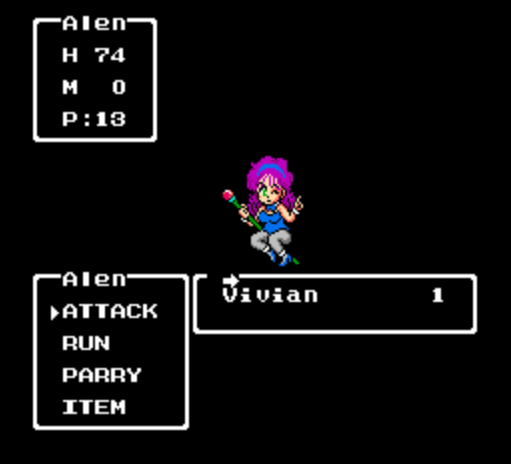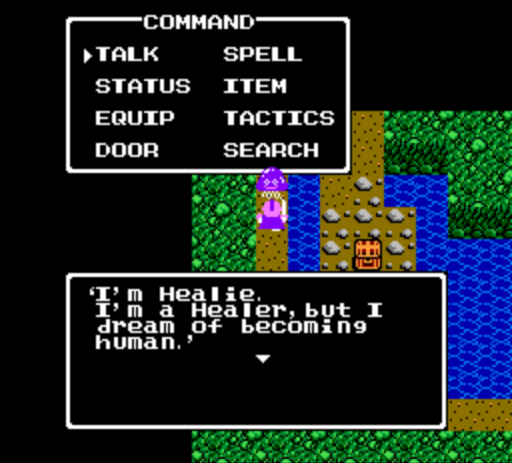Games beaten 2020:
1. Ys: The Oath in Felghana PSN
Vita2. Final Fantasy XII: The Zodiac Age
Switch3. Super Mario Party
Switch4. Moss
PSVR5. Paper Mario: Colour Splash
Wii U6. The Firemen
SNES7. Bishoujo Senshi Sailor Moon
SFC8. Kuukiyomi: Consider It!
Switch eShop9. Valkyria Chronicles
Switch eShop10. Illusion of Time
SNES11. Trials of Mana
Switch12. Undertale
Vita13. Rastan
SMS14. Rainbow Islands
SMS 15. River City Girls
Switch16. Animal Crossing: New Horizons
Switch17. Streets of Rage 4 Switch eShop *NEW*
18. Dragon Warrior IV NES *NEW*Streets of Rage 4
I’m a massive fan of the Streets of Rage games – all 3 of the titles on Mega Drive were childhood favourites of mine, but especially Streets of Rage 2. It’s a game I can go back to again and again and not get bored. So I was pretty excited when Streets of Rage 4 was announced, especially due to the involvement of LizardCube, who did an excellent remake of Wonder Boy III not too long ago.

When the day finally arrived, I jumped in, and what can I say – I had a blast. There’s no doubts that this is a proper follow up to the old-school titles, and it really felt great to have the chance to play through a new game in the series. Me and my wife both jumped in and played through it together, swapping characters until we finally stuck with Cherry and Adam.

The characters here all feel unique and fun to use, although I will say that some seem more fun then others. I lean towards Adam and Cherry because they have better movement options (Cherry can run and Adam can do a short dash) which is more my style – I mainly played as Skate back in the day. I found Floyd, Axel and Blaze a lot harder to use due to their limited movement options – it’s a shame they dialled that back from Streets of Rage 3 where everyone could run and roll. I found that some of the approach options from before were worse too. Max and Blaze in SOR2 had good approach moves in the form of their slide and flip attack respectively, but Blaze’s flip is way shorter range now (it’s bad, and she feels much worse overall) and Floyd hasn’t got anything like Max’s slide to help him cover ground.

There are 12 stages in the game, which is a pretty good amount, and it feels a bit longer than the 8 stages of the classic games. The stages definitely vary in length – the first stage is pretty long for example, but a later stage on top of a train is over in a flash. The game mixes things up nicely with some memorable locations, including an art gallery, the top of a train and a biker bar. There are some level hazards in some stages, but I can’t lie – unlike prior streets of rage games where the factory or elevator levels were some of my favourites, I found them more frustrating here – some of the stage hazards feel a bit gimmicky (like the poison water puddles in the sewer) and it feels harder to capitalise on the pits in levels where they are as many characters seem to have less throw options than earlier games and combos often send enemies right over pits to safety on the other side.

There’s a good variety of enemies here, and most of them are a lot of fun to bash through. The bosses are generally pretty cool too, and there’s some fun throwbacks and surprises amongst them. This is where my biggest frustration with the game comes in though – there’s a few too many enemies with cheap attacks for my tastes, especially if you play as the slower characters – Donovans uppercut comes out very quickly and has a big range and high damage, and he uses it even when you’re grounded now for example. The kicking guys are a pain too, and the Molotov throwing enemies in later levels suck.

More frustrating still, for me, is that many enemies now have invincibility on some of their attacks, meaning that you can be punished if you have bad timing. This changes the feeling of the game as you progress and not for the better – sections with many enemies with invulnerability periods can be some of the worst parts of the experience, and I’d rather they just let me punch them to prevent attacks rather than having to tediously dodge them and wait for my opportunity. It’s not a game breaker by any means, and as I get more familiar with the game I’m sure it’ll become easier to deal with, but it went against 25 years of Streets of Rage instincts for me and I didn’t love it.

Visually, the game is stunning, as you can see by watching any trailer or looking at any screenshots. The stages are atmospheric, varied and colourful, whilst still keeping that dingy grimy feel of the series. The music is obviously a big part of Streets of Rage overall, and I won’t lie – I don’t think it’s as good here as the first 2 titles. That said, I have enjoyed it, and part of it might be that I’m less familiar with the tunes currently.
Overall, I’ve had a blast with Streets of Rage 4. I’ve heard many people say it’s the best in the series, and I can see why. I will say that I don’t quite agree with that – some of the furstrations here regarding character movement, annoying stage hazards and enemy invincibility on attacks don’t sit so well with me and hold it back from that top spot. Streets of Rage 2 is still the best in my eyes, but this is sitting pretty at second place – and that’s a pretty great achievement in itself. If you love the series like me, do yourself a favour and pick this up.
Dragon Warrior IV
Warrior 4 is the second game in the main Dragon Quest series I have played, after the original. I wasn’t a big fan of that one – I found that you’d normally found everything you needed to quite early, at which point you had nothing but a very, very tedious grind (it took me 8+ hours) to do to be able to challenge the final boss.

The Dragon Quest series is the most generic RPG of generic RPGs in terms of it’s core gameplay. A party of heroes quests around the world to find magic artifacts and uses them to defeat a great evil, via the medium of turn based battles. Dragon Quest 4 does try to mix things up with it’s story structure though, and that’s where it’s subtitle comes in – Chapters of the Chosen.

You see, this time round you don’t begin the game as the hero – rather, the game is split into 5 chapters. The first 4 of these follow the adventures of various characters who will later come together to form your heroes party in the final chapter. The first follows the Knight Ragnar, on a quest to rescue missing children. The second follows the princess Alena, and her attendants, the chancellor Cristo and the Wizard Brey, as they run away from the castle. The third follows the merchant Taloon, who leaves on a journey to trade and earn enough money to run his own shop, and the final quest follows the sisters Nara the fortune teller and Mara the dancer as they try to avenge their murdered father.

The chapter system is interesting storywise, as it allows for more understanding and development of your party than you might otherwise get, particularly from an NES RPG. It’s a shame they all feel a bit sidelined when they rejoin in chapter 5, but it’s still beyond the normal amount of character development for most 8-bit titles. However, mechanically most are fairly mundane. Chapter 1, 2 and 4 generally just feel like they could be a subsection of any other Dragon Quest RPG, although I did enjoy Taloon’s quest – the buying and selling of items, high drop rate and hiring of mercenaries to fill your party managed to make the experience feel unique enough to stand out.

Once you get to chapter 5, it’s back to the classic Dragon Quest though. Chapter 5 is at least as long as the other 4 put together, if not longer, and it’s the ‘true’ story of Dragon Quest 4. You adventure as the hero on a quest to prevent the resurrection of the evil dark lord. One unique, if not necessarily always welcome mechanic, is that your party members in this chapter are all AI controlled. This makes them still feel like unique individuals, but it does mean that they can sometimes be as dumb as bricks. In all honesty, the AI isn’t too bad overall. The main downsides are that they tend to heal later than you might otherwise like, and that characters with attack spells don’t always make the best options – expect your chancellor to cast instant death on every boss despite the fact they’re all immune to it.

Overall, I liked the game well enough. It’s a big step up from where the series began, despite being on the same console. The story, characters and towns are all a lot more memorable. Graphically it feels like it struggles a bit, and there’s many instances of colour clash where red character sprites overlap with red floor tiles and it looks a bit gross. It’s also a bit less grindy than the original, but only a bit. I played this on my Retron 5 and let me just say that the fast forward function was a godsend. I’m not sure I’d have the patience these days to handle the grinding sections otherwise.

This is a decent game if you like this sort of thing though, and worth a play. I understand the US version is super pricy though – I own it on Famicom myself, but I patched the US ROM onto it with the retron.
















